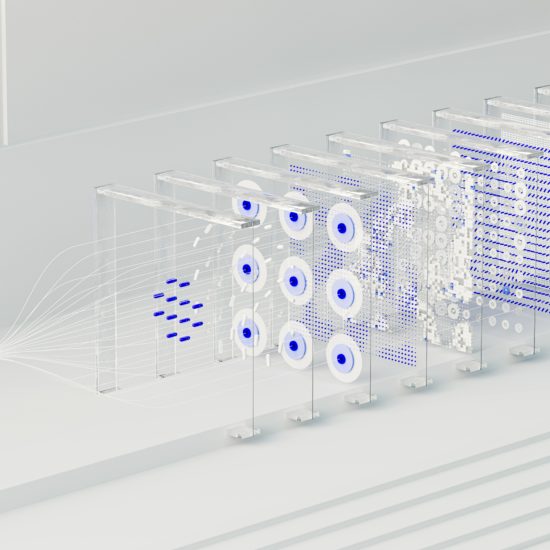Contents
- 1 📚 Replit Overview
- 2 What is Replit?
- 3 Key Features of Replit
- 4 🚀 Building an Application with Replit
- 5 Example Application: Coffee Shop Linkin Bio App
- 6 🤖 Replit's Agentic Flow
- 7 📈 Advantages of Using Replit
- 8 📊 Comparison with Other Platforms
- 9 📝 Conclusion
- 10 Web Development Process
- 11 Designing the Website
- 12 Adding a Contact Form
- 13 Connecting to a Server
- 14 Email Automation
- 15 Deploying the Website
- 16 Customizing the Website
- 17 Troubleshooting
- 18 Conclusion
- 19 Key Terms
- 20 Example Code
- 21 AI-Powered Tools
📚 Replit Overview
Replit is a platform that allows users to build and deploy full-scale applications using a conversational interface. It provides a range of features, including database storage, user authentication, and integration with external services.
What is Replit?
Replit is a platform that enables users to build and deploy applications using a conversational interface, without requiring extensive coding knowledge.
Key Features of Replit
- Database Storage: Replit provides built-in database storage, allowing users to store and manage data within their applications.
- User Authentication: Replit offers user authentication features, enabling users to create login and logout functionality for their applications.
- Integration with External Services: Replit allows users to integrate their applications with external services, such as webhooks and APIs.
🚀 Building an Application with Replit
To build an application with Replit, users can follow these steps:
- Choose a Prompt: Select a prompt from the Replit homepage or create a custom prompt.
- Configure the Application: Configure the application by specifying requirements, such as database storage and user authentication.
- Review and Approve the Plan: Review the plan generated by Replit and approve it to begin building the application.
Example Application: Coffee Shop Linkin Bio App
| Feature | Description |
|---|---|
| Social Media Links | Display social media links for the coffee shop |
| Coffee Shop Logo | Display the coffee shop logo |
| Contact Form | Send data to a specified webhook |
🤖 Replit's Agentic Flow
Replit's agentic flow is a process that enables the platform to understand and generate code based on user input. It involves the following steps:
- Understanding User Input: Replit analyzes user input to determine the requirements of the application.
- Generating Code: Replit generates code based on the user's requirements.
- Building the Application: Replit builds the application using the generated code.
📈 Advantages of Using Replit
- Rapid Development: Replit enables rapid development of applications, allowing users to build and deploy applications quickly.
- Conversational Interface: Replit's conversational interface makes it easy for users to build applications without requiring extensive coding knowledge.
- Collaboration: Replit allows users to collaborate with others on developing applications.
📊 Comparison with Other Platforms
| Platform | Features | Advantages |
|---|---|---|
| Replit | Conversational interface, database storage, user authentication | Rapid development, easy to use |
| Card | Front-end development, design-focused | Better design options, more control over code |
| WordPress | Content management, customization | Easy to use, large community |
📝 Conclusion
Replit is a powerful platform that enables users to build and deploy full-scale applications using a conversational interface. Its key features, including database storage and user authentication, make it an attractive option for developers. While it may have some limitations, Replit's advantages, such as rapid development and ease of use, make it a great choice for building applications quickly and efficiently.## 📝 Web Development with AI-Powered Tools
Web Development Process
The web development process involves designing, building, and deploying a website. In this case, we're using an AI-powered tool to create a website with a contact form.
Designing the Website
- The AI tool provides a basic design for the website, which can be customized.
- The design includes a logo, color scheme, and layout.
- The logo is not visible in the initial design, but the AI tool can fix this issue.
Adding a Contact Form
- A contact form is added to the website, which allows users to input their name, email, and message.
- The form is connected to a web hook, which sends the data to a server.
- The server can then process the data and send a response back to the user.
Connecting to a Server
- The contact form is connected to a server using a web hook.
- The server can process the data and send a response back to the user.
- The server can also be used to connect to other services, such as email providers.
Email Automation
- The server can be used to automate email responses to users.
- The email response can be customized using a template.
- The template can include variables, such as the user's name and message.
Deploying the Website
- The website can be deployed to a production environment.
- The deployment process involves provisioning, building, and promoting the website.
- The website can be deployed to a custom domain.
Customizing the Website
- The website can be customized using a variety of themes and templates.
- The website can also be customized using code.
- The code can be used to add custom functionality to the website.
Troubleshooting
- The website can be troubleshooted using a variety of tools and techniques.
- The tools and techniques can be used to identify and fix issues with the website.
Conclusion
The web development process involves designing, building, and deploying a website. In this case, we used an AI-powered tool to create a website with a contact form. The website can be customized and deployed to a production environment.
Key Terms
| Term | Definition |
|---|---|
| Web Hook | A web hook is a way for a server to send data to another server. |
| Server | A server is a computer that hosts a website or application. |
| Email Automation | Email automation is the process of automating email responses to users. |
| Deployment | Deployment is the process of moving a website or application to a production environment. |
| Custom Domain | A custom domain is a domain name that is specific to a website or application. |
Example Code
# Example code for sending an email using a template
import smtplib
from email.mime.text import MIMEText
# Define the email template
template = „Hello {name},\n\n{message}\n\nBest regards,\n{sender}“
# Define the email variables
name = „John Doe“
message = „This is a test email.“
sender = „Jane Doe“
# Create the email message
msg = MIMEText(template.format(name=name, message=message, sender=sender))
# Send the email
server = smtplib.SMTP(„smtp.example.com“)
server.sendmail(„jane.doe@example.com“, „john.doe@example.com“, msg.as_string())
server.quit()
AI-Powered Tools
- Repl is an AI-powered tool that can be used to create websites and applications.
- Make is an AI-powered tool that can be used to automate tasks and workflows.
- Open AI is an AI-powered tool that can be used to create chatbots and other AI-powered applications.





